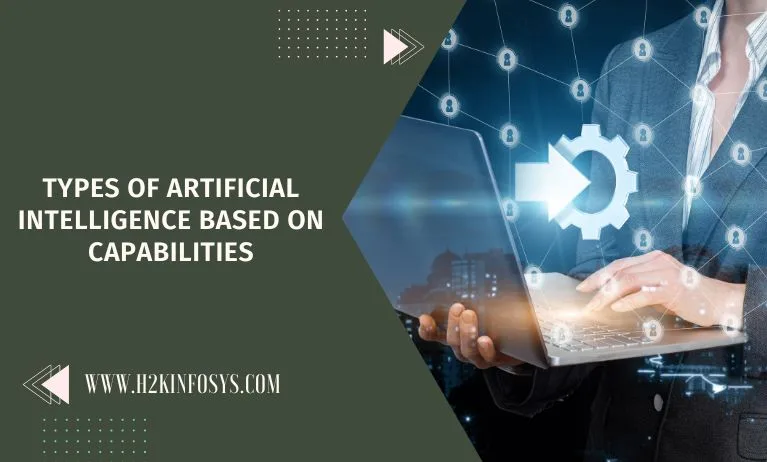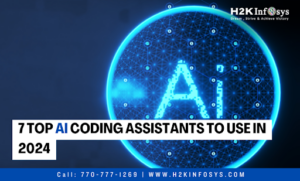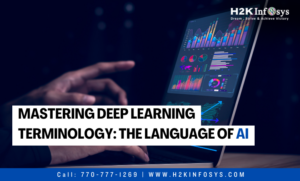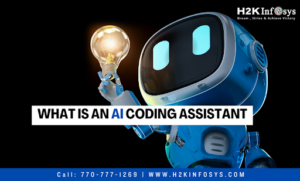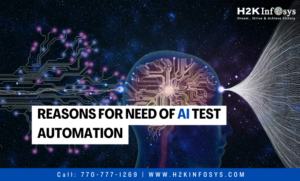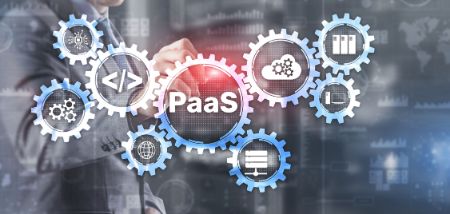A subfield of computer science called Types of Artificial intelligence aims to emulate or reproduce human intelligence in machines so that they can carry out tasks that ordinarily call for human intelligence. AI systems can be programmed to do a variety of tasks, such as planning, learning, reasoning, problem-solving, and decision-making.
Algorithms drive artificial intelligence systems, which employ methods like machine learning, deep learning, and rules. AI systems are fed computer data by machine learning algorithms, which use statistical methods to help AI systems learn. AI systems develop new skills through machine learning, improving tasks without having to be explicitly trained to do so.
If you’re unfamiliar with artificial intelligence, you’re probably more familiar with the human-like robots that appear in science fiction. There are many amazing things that scientists, academics, and engineers are accomplishing with artificial intelligence, even though we’re not quite at the level of robots that can mimic humans.
Google’s search algorithms, IBM’s Watson, and autonomous weapons are all examples of Types of Artificial intelligence. Businesses all over the world now have access to AI technology that enables humans to automate previously time-consuming jobs and quickly recognize patterns in data to uncover previously undiscovered insights. Check out the Artificial Intelligence online course to learn more.
What are the 3 types of Artificial intelligence based on Capability?
The ability of AI technologies to replicate human qualities, the technology they employ to do so, the applications they have in the actual world, and the theory of mind—which we’ll cover in more detail below—are used to classify them.
All hypothetical and practical artificial intelligence systems can be classified into one of three categories using these traits as a guide:
- Artificial superintelligence (ASI), which is more intelligent than a human,
- Artificial general intelligence (AGI), which is similar to human intelligence, and,
- Artificial narrow intellect (ANI), which has a limited range of abilities.
Artificial Narrow Intelligence (ANI) / Weak AI / Narrow Artificial intelligence
The only kind of artificial intelligence we have so far effectively realized is artificial narrow intelligence (ANI), often known as weak AI or narrow AI. Narrow AI is goal-oriented, created to carry out a single task, such as driving a car or conducting an online search, and is exceptionally intelligent at carrying out the particular task it is taught to do.
Although these machines appear clever, they only have a limited range of capabilities, which is why this kind of artificial intelligence is sometimes referred to as weak Types of Artificial intelligence. Narrow AI just replicates human conduct based on a limited set of factors and settings; it does not copy or replicate human intelligence.
Consider voice and phrase recognition in self-driving cars, recommendation algorithms that propose things based on your buy history, and the virtual assistant Siri on iPhones. These systems can only be taught or trained to carry out particular tasks.
In the past ten years, advances in machine learning and deep learning have enabled major advancements in narrow artificial intelligence. By replicating human-like cognition and reasoning, for instance, AI systems are utilized in medicine today to diagnose cancer and other diseases with extremely high accuracy.
Narrow Natural language processing (NLP), which is used to carry out tasks, is where machine intelligence in AI originates. Chatbots and other comparable AI technologies clearly use NLP. AI is programmed to comprehend natural language text and speech by interacting with humans in a natural, personalized manner.
Narrow AI can either be reactive, or have a limited memory. Reactive Types of Artificial intelligence mimics the human mind’s capacity to react to various stimuli without prior knowledge and is exceedingly simplistic; it lacks memory and data-storing capabilities. The more sophisticated AI with limited memory can store data and learn, allowing computers to use previous facts to guide their judgments.
Most Types of Artificial intelligence (AI) is limited memory Types of Artificial intelligence, where computers use massive amounts of data for deep learning. Personalized AI experiences, such as virtual assistants or search engines that retain your data and tailor your future experiences, are made possible through deep learning.
Examples of narrow Artificial intelligence
- Rankbrain by Google / Google Search
- Siri by Apple, Alexa by Amazon, Cortana by Microsoft, and other virtual assistants
- IBM’s Watson
- Image / facial recognition software
- Disease mapping and prediction tools
- Manufacturing and drone robots
- Email spam filters / social media monitoring tools for dangerous content
- Entertainment or marketing content recommendations based on watch/listen/purchase behavior
- Self-driving cars
Artificial General Intelligence (AGI) / Strong AI / Deep Artificial intelligence
Artificial general intelligence (AGI), also known as strong Types of Artificial intelligence (AI) or deep Types of Artificial intelligence (AI), is the idea of a computer with general intelligence that mimics human intelligence and/or behaviors, with the ability to learn and apply its intelligence to solve any problem. In each given circumstance, AGI is capable of thinking, comprehending, and behaving in a manner that is identical to that of a human.
Strong AI is still a work in progress for scientists and researchers in AI. To be successful, they would need to devise a method of imbuing machines with consciousness and a whole set of cognitive capabilities. Experiential learning would need to be advanced in order for machines to be able to apply it to a larger variety of issues as opposed to just being more proficient at a single task.
A theory of mind AI framework is used by strong AI, which refers to the capacity to ascertain the wants, emotions, beliefs, and mental processes of other intelligent beings. The theory of mind-level AI focuses on teaching machines to fully comprehend people rather than replicating or simulating human thought processes.
Given that the human brain serves as the prototype for establishing universal intelligence, the enormous task of developing robust Types of Artificial intelligence is not surprising. Researchers are having difficulty simulating fundamental movements and vision because they lack a thorough understanding of how the human brain works.
One of the most noteworthy attempts to develop strong AI is Fujitsu’s K, one of the fastest supercomputers. However, given that it requires 40 minutes to mimic a single second of cerebral activity, it is difficult to say whether or not strong AI will be developed in the near future. It is expected that machine learning and vision will improve as picture and facial recognition technology develops.
Artificial Superintelligence (ASI)
Artificial superintelligence (ASI) is a hypothetical kind of artificial intelligence (AI) that goes beyond simply mimicking or understanding human intelligence and behavior. With ASI, computers become self-aware and outperform human intelligence and ability.
Superintelligence has long served as the inspiration for futuristic dystopias in which robots conquer, overturn, or enslave humans. According to the idea of artificial superintelligence, Types of Artificial intelligence develops to the point where it is so similar to human emotions and experiences that it not only understands them but also elicits its own feelings, wants, beliefs, and goals.
Theoretically, ASI would excel at everything we do; maths, science, athletics, art, medicine, hobbies, interpersonal connections, everything, in addition to replicating the complex intelligence of humans. ASI would be more able to retain information and process and interpret data and stimuli more quickly. As a result, super-intelligent beings would have much better decision-making and problem-solving skills than humans.
Although the idea of having such potent technology at our disposal may sound alluring, it has several unintended implications. Self-aware super intelligent beings would be able to understand concepts like self-preservation if they ever existed. It is impossible to predict how this will affect humanity, our survival, or our way of life.
Conclusion We may be a long way from building intelligent machines that can solve every problem on their own. However, we should concentrate our efforts on comprehending how a machine can train and learn on its own and have the capacity to draw conclusions from the past. To learn more about Types of Artificial intelligence, check out the Artificial Intelligence online training platform.
